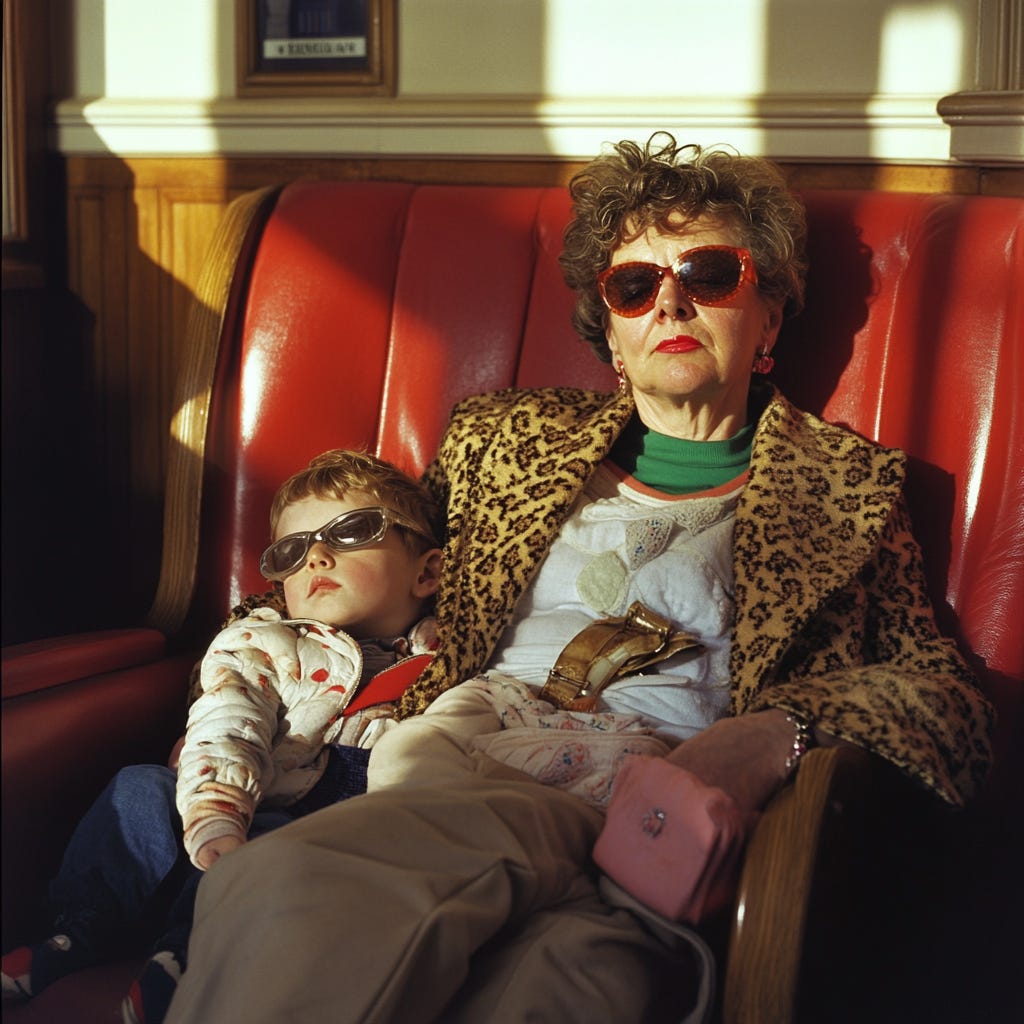[5 minute read]
THE SECOND MOUNTAIN
In his book The Second Mountain, David Brooks describes the first mountain of life as personal achievement — career, success, and independence. Our second mountain begins after a fall, loss, or crisis, and is defined by purpose, commitment, connection, and service to others.
When I read The Second Mountain a couple years ago, I thought I was ready to make significant life changes. I was in a rut and felt adrift — the career I’d spent decades building was no longer fulfilling, I was lacking purpose, and I was taking it out on the people I loved the most.
It wasn’t until somewhat recently that I understood the second mountain in a practical sense. Everything I’d been chasing as a young man and any success I had, became my identity — and that was shaky ground. My brain was telling me to fill the void by pursuing some other type of achievement, but my body was fighting it. What I really needed as I ascended my second mountain was simple: to stop suffering unnecessarily, enjoy life, and find meaning through relationships and community.
BROKEN OPEN
“You can be broken, or you can be broken open”
-David Brooks, The Second Mountain
When we experience a major (often traumatic) life event, it can either break us (shut us down, harden us, or keep us stuck) or break us open (transform us through the pain, leading to growth, humility, and deeper connection).
I recently found myself at the break or be broken open fork in the road. It was a long overdue reckoning, but I was ready. Allowing myself to be broken open and exploring my patterns has made all the difference. It’s painful, disorienting, and scary uncharted territory — but on the other side of being broken open is a new and more grounded way of moving through the world.
The suffering in being broken open can deepen us, strip away ego, and shift our focus from self-centered pursuits to greater meaning, and connection — it’s the difference between surviving and thriving.
“The cure for pain is in the pain”
-Rumi
Healing and transformation come from embracing and understanding pain, not avoiding it. I have been a pro at suffering in pursuit of selfish goals my whole life, but it took me four decades of suffering the wrong way to understand the importance of facing suffering to grow.
The body holds what the mind ignores.
ATTACHMENT
Many of you are probably familiar with attachment styles — maybe even your own, or those of your partner, loved ones, or friends. I had never even heard this term (or maybe I was just ignoring it) until recently. But understanding my attachment style and how it shapes the way I relate to people I love was eye-opening to say the least.
4 main attachment styles-
Anxious: Craves closeness but fears abandonment — often needs reassurance and may overthink or cling
Avoidant: Values independence, struggles with vulnerability — may pull away when things get too close
Fearful Avoidant (Disorganized): Wants connection but fears it — often swings between craving intimacy and pushing it away due to past trauma or inconsistency
Secure: Comfortable with intimacy and independence — can trust, connect, and communicate openly in relationships
You can take an attachment style test here
Attachment styles are formed in early childhood through repeated interactions with caregivers. When caregivers consistently meet a child’s emotional needs — offering safety, comfort, and staying emotionally in tune — the child typically develops a secure attachment. If care is inconsistent, neglectful, overly anxious, or frightening, the child may develop insecure attachment styles.
Basically, How we are cared for teaches us how to connect — or protect ourselves — in relationships, romantic or otherwise.
We’re not necessarily talking about overt trauma or neglect — attachment wounds often come from subtle, repeated experiences in childhood that make a child feel unseen, unsafe, or emotionally alone. It can be not knowing how to comfort an upset child, distracted or overwhelmed parenting, attention/love tied to performance, overactive or inconsistent caregiving, or discouraging a child’s need for support (tough love).
Labeling and understanding your attachment style isn’t a scarlet letter — it’s a light that reveals patterns you might not even realize are there. It’s easy to think, “welp, this is just who I am,” but I doesn’t have to be.
It’s an ongoing process — and therapy definitely helps — but awareness is the first step toward change. Recognizing these patterns helped give me the clarity to start shifting them with intention.
CHANGE
Being broken open gives us the space to explore ourselves, make meaningful shifts, and come out the other side more whole. You don’t take your car to the shop unless something needs to be fixed. For me, it was a major life change that led me to the fork in the road — but even without a second mountain style event, we can all use a tune-up now and again.
Simple steps to rewiring the brain
Understand your attachment style, what triggers you and when it tends to show up
When you feel “off” or triggered, name the feeling and notice where you feel it in your body (tight chest, hot face, clenched fist, wanting to flee, etc.)
Slow down and pay attention to your breath
Let the feeling exist without feeling the need to fix it
Ground yourself and ask: Is this an emergency, or just a feeling? If it’s just a feeling, remind yourself you’re safe — and it will pass
Reconnect to the present and find something to be grateful for in the moment
The good news is that recognizing our attachment-driven thoughts, feelings, and reactions is 75% of the change process. Then it’s just a matter of rewiring the brain to understand that much of how we show up in relationships isn’t truly ‘us’ — it’s our nervous system, shaped by our childhood, defaulting to protection instead of connection. And at the end of the day, connection is what we all want — we’re wired for it.
My first mountain had a summit — and it was far less fulfilling than I expected. I have a feeling I’ll never reach the summit of my second mountain, and that’s fine with me. My new mantra: meaning > achievement, real connection > self-protection, vocation > job, and community (tribe) is vital.

IF IT’S NOT COOL, JUST ADD ICE!






